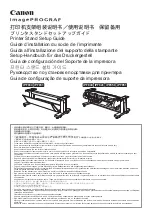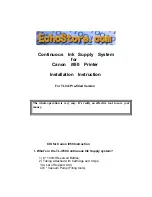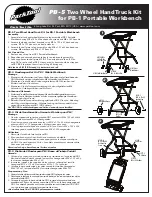
w w w . m a g u r a . c o m
s e r v i c e @ m a g u r a . d e
w w w . m a g u r a . c o m
s e r v i c e @ m a g u r a . d e
12
13
Brake Oil:
MAGURA disc brakes use a transmission medium low viscosity mineral
oil, the biodegradable MAGURA Blood. Contrary to DOT brake liquid the MAGURA Blood
does not irritate human skin or strip the paint of your frame. Moreover it does not
absorb water like DOT and does not have to be changed regularly. What sounds unbelie-
vable is a fact: you can use your brakes over years without having to touch them
(except brake pad change!)
Always make sure that the brake system does not have any leaks by
activating the lever blade, holding it and checking the hose connections and
reservoir cover for eventual leaks. Consult a trained technician in case of
leaks. Leaks cause poor braking performance with possible serious accidents!
As to hints about repairs of the hose see page 14 onwards..
Brake pads: wear, control and replacement
Brake pad wear: The brake pads are subject to wear due to friction bet-
ween rotor and pads. Both the Clara and the Julie disc brake feature a fully
automatic pad wear adjustment. Regularly check the thickness of your brake
pads and replace them, if necessary!
Control and replacement of the brake pads
Never touch either the rotor or the brake caliper after long braking as this
may cause serious burns.
1.
Remove the wheel so that you have free access to the brake caliper.
Push both brake pads back by putting the transport device or a flat blade screwdriver
into the gap. Move the screwdriver
slowly
back and forth until both caliper pistons are
fully retracted and flush with caliper body.
Never push back the pistons without the brake pads mounted!
2.
Remove the cotter pin that holds the brake pads.
3.
Pull out the brake pads. Their „ears“ make this very easy. Clean the pads with a
dry rag that is free of oil and grease.
Never squeeze the lever blade without the brake pads in place and the
wheel mounted. If this happened by accident push back the pistons with moun-
ted brake pads by using the transport device or a flat blade screwdriver.
4.
Minimum thickness of a brake pad including the holder is 2,5mm.
Use only
genuine MAGURA brake pads!!
Tip: check the pad wear with the groove of the YELLOW transport device. Pad does NOT
fit to the groove (picture): o.k.! Pad does fit to the groove: change the pads!
Use only genuine MAGURA brake pads. MAGURA cannot guarantee a correct
function of the brake if you use brake pads from other manufacturers, which
were not tested. Using other pads might cause poor braking and cause heavy
bodily injury! All warranty claims will be void in case of misuse!
5.
Clean on the occasion of the brake pad change, the brake body with a clean rag.
Make sure that the friction side of the new brake pads points towards the rotor.
6.
Secure the new pads with the new cotter pin, which is delivered, with the pads.
Check the correct fitting of the pads by pulling them.
7.
Tighten the end of the cotter pin with a screwdriver or pliers.
Check the cor-
rect fitting of the cotter pin by pulling it.
8.
Check, whether the pistons are fully pushed back and whether the pads are flush
with the caliper body. Push the brake pads back with the transport device or a flat blade
screwdriver as described on page. Re-install the wheel and check for a correctly tighte-
ned quick release skewer of the wheel.
9.
Squeeze the lever blade several times (pump) to push the pads to their proper
position until the lever feel becomes very firm.
New brakes and/or new rotors or brake pads must always be run in by
braking at least 30 times from a speed of 30km/h to achieve the maximum
brake power. Take your bike to a safe place to run in the brake.
Never contaminate brake pads with oil or grease this causing permanent loss
of brake power! Contaminated pads are definitely dead and must be replaced!
7. Maintenance




























